|
Winning a championship in THL is hard. There’s so much that needs to go right for a team to reach the playoffs, let alone survive the sudden-death slog that we call the postseason. Succeeding at any of this starts at the very beginning. For the win-rated series, Pro and Wild, building a championship team is straightforward: Get the best players possible. If your team is strong from top to bottom, you’ll go far every season. For Legacy and Hero, on the other hand, team construction is a bit trickier. The PR cap imposes a limit on how skilled a team can be, meaning building the best team from top to bottom isn’t feasible. The best players aren’t enough to win a championship by design. If you want to win in a PR series, you need to find an edge. Gaming the SystemLegacy and Hero are designed to have players of equal strength face each other each week. The PR system encourages parity amongst all teams to encourage players of all skill levels to join. On a macro scale, the system does exactly what it intends to do. Highly skilled players with higher PR are matched against each other, and others face off in lower seeds. Readers can check out a graph made two years ago by THL member Robocats below. Across all of Hero (blue line) and Legacy (orange line) up to Seasons 16 and 19 respectively, and excluding the first three seasons of THL, game win rate was mapped as a function of PR difference. Players are seeded to match their PR as closely as possible to achieve a 50% expected game win rate. The goal in any and all teambuilding is to take advantage of, or “game,” this graph. There are two ways to do this: loading up a seed with extra PR, or utilizing an undervalued player. Playoff teams will often utilize one of these strategies. Championship teams will almost always rely on both to win it all. There are tricks to employing both of these strategies, but we’ll focus on them at a later time. Why is “gaming the system” so important? THL has 5 player rosters, so individual matches aren’t the end-all-be-all of the week’s result. Each match has a huge impact on a team’s odds of winning the week though. Let’s suppose that, on average, a match results in a 3-1 result (THL matches have averaged about 4.1 games long in most series across all seasons due to the nature of scoring and matchup game theory, but for simplicity we’ll use 4 games here). In the case of two evenly matched teams, the team to win the first match is expected to win the week 69% of the time. If that same team wins the second match, it’s expected to win the week a whopping 88% of the time! Having even a single player who can win week in and week out can give a team a huge advantage over the competition. PR and SeedsThe concept of “gaming the system” is simple enough. Without some guidelines, however, it can be hard for a captain to figure out what PR to target when trying to game. Everyone knows to maximize their team’s PR to get as close to the 1850 PR cap as possible, but knowing how to utilize that PR in each seed is just as important. Legacy and Hero have developed a metagame among seeds to give us an idea of what PR range to target. Below is a breakdown of PR in all Legacy seeds from seasons 21-24:
Seeds have distinct brackets that give captains a simple outline to aim for when recruiting players. As a general rule, the breakdown goes like this: 1 Seed: 500-550PR 2 Seed: 420-500PR 3 Seed: 325-420PR 4 Seed: 200-325PR 5 Seed: 50-200PR Readers might notice that PR ranges increase with lower seeds. This is by design for a few reasons. The first reason is the most obvious: Successful players are the most “known” quantities. The best will have records to justify their position and are safe bets for captains to select. Players in these high brackets will usually be low risk picks. As captains fill out the rest of their seeds, that risk becomes greater. Newer players also tend to enter THL at lower PR levels, and it can be difficult to evaluate their skills and talents. The increased PR range helps keep these players in their proper seeds during their first 10 games as they adjust to THL via the New Player Bonus Multiplier. It serves as a sort of insurance so teams don’t see their lower seeds fall victim to an adjusting player after taking a flier on someone new. The breakdown is a guide and in no way a requirement for competitive teams to focus their structure around. On the contrary, captains should use this guide as a way to select seeds that they can exploit with higher PR players or save extra PR to strengthen the rest of the roster. How can someone game the system to strengthen their roster with the knowledge above? There are a few strategies: Shelter a 550PR player in the 2 seed with another 550 PR player in the 1 seed This is the most obvious strategy captains have adhered to over the years. By sticking a 550PR player in the 2 seed, the team is built so a 1 seed rakes wins against lower seeded opponents every week. This roster building method is especially effective when the 1 seed is historically strong. The 550PR cap is ineffective at evaluating the highest skill players because there aren’t enough opponents who can match them at their level. Therefore, these players can win more despite facing opponents that PR considers an equal skill level. Legacy S24’s championship team, Albatrosses :Play Mistakes is a prime example of the method in use.
LotusKnight is a historically strong 1 seed, as evidenced by his 830 True PR and 70-40 match record across 15 seasons. He’s the ideal candidate to shelter another 550 PR player. Being a 550PR player herself, basedinc is in a position to succeed against lower PR opponents. Here’s the team’s results by the end of the season:
LotusKnight remained an effective player as a historically strong 1 seed and basedinc was able to boast a strong record in her seed. The approach was successful, rewarding the team with a Legacy championship. The downside to this strategy is that the lower seeds tend to be weaker than those on other teams, since there is less PR allotted to them. 750 PR for 3 seeds is lower than the average allotted, albeit slightly. The team above is a prime example of this, with Cahnew and Charip showcasing PRs in the 5 seed range at the start of the season. Fortunately, Cahnew proved that they could handle a higher seed, but gaming the system in any of those seeds with this method is much more challenging for most teams. Build a team with multiple lower seeds gaming the system Teams like to take 550PR players because of their consistency, but there are ways to get ahead that don’t involve utilizing the best of the best. This strategy has been a go-to for teams like F2L, one of the most prolific franchises in all of THL. Multiple teams like Legacy S01’s The Cooler have also used this method to win a championship. The premise is simple: find players close in PR that can switch seeds often. Consider a pair of historic 2 seeds who are 440PR, but alternate between the 2 and 3 seed slots on the roster. Someone will always have an advantage in the 3 seed, regardless of how both perform each week. Teams will sometimes incorporate this with two pairs of players to get an edge in two different seeds while sacrificing some competitive parity in a middle seed, or select three players to shuffle between seeds all season. For example, take a look at Legacy S20’s The Cooler from the beginning of the season:
All 5 players are within 200PR of one another. The team was built to capitalize the lower seeds with players at a higher PR than their opponents. As long as at least one of the 1 and 2 seeds could win at least half of their matches, then the team was poised for a deep run. Lo and behold:
Not only did Cbiek1 overperform in the 1 seed, but the 2-4 seeds were executed exactly as planned. Icer took the fall for SuperHero and Bremen, going 2-7 in the regular season and 1-4 in the 2 seed alone. SuperHero and Bremen were then able to go 6-3 and 4-1 respectively while avoiding the 2 seed. By the end of the season, Bremen was in the 2 seed, icer was settled into the 4, and SuperHero was on the rise in the 3 seed. Playoffs came around and the team’s structure continued to pay off dividends. icer was able to sport a 3-1 record as an overvalued 4 seed, Bremen matched that with a 3-1 record of their own in the 3-seed, and SuperHero carried their momentum into the postseason with a 4-0 record.
Spotting OverperformersCaptains have numerous factors to consider when trying to predict who will overperform and who will underperform in a certain seed. In fact, the number of factors increases exponentially the lower the target seed is. Predicting a 1 seed’s performance is always going to be easier than predicting a 4 seed’s. Why is this? Consider the risk factor discussed in the PR and Seeds section. A 550 PR player is a known quantity since their rating and seed has not and will not change. They’re locked into their position, meaning their past performance is a solid indicator of the skill a captain can expect from them. 2 seeds see more movement and shifting than 1 seeds, but less than 3 seeds, and so on. When players shift their PR and seeding so much from one season to the next, it can be difficult to know how to evaluate someone based only on their performance. After all, match scores only go so far in telling a story. The trick to evaluating a player is knowing what expectations to set for them. In any PR series, a player’s skill is only relative to who they will face. The goal is not to get the best player everywhere at all. In fact, players shouldn’t even be aiming to get the best player in each seed. Most championship teams will have a player with a losing record, and that’s okay! Understanding this is a crucial step in figuring out how best to construct a winning roster. There are two questions that a captain can ask when evaluating a player. The first question is straightforward: can this player overperform in the seed I want them to play in? It’s a question that everyone asks when picking up most players. Captains focus on these players to guarantee success on their team. The second question is less obvious, and is sometimes seen as a sign of settling for what is available: can this player keep up with the other players in their seed? Before we discuss why this question matters, it’s important to dispel any false ideas that the question may bring. Players being asked this question are just as, if not more important than those who are asked the first question. This is because these players enable teams to slot in traditional overperformers. They’re a crucial part of team building that captains should always include. Let’s focus on ways that captains can find the answers to these questions now. We’ve discussed how cheating the system is the goal, and that the way to do it is by putting these players in a position to succeed against lower skill players, whether that be via PR rating or by utilizing an undervalued player. How can a captain be sure that a player can overperform? There are a few signs:
Higher than expected performance in a higher seed The concept here is simple: suppose a player who has traditionally slotted into the 3 seed is forced to play in the 2 seed for a season. This player finishes with a losing record in their new seed, and their team misses the playoffs. Finishing with a losing record isn’t the result everyone hopes for, but it isn’t necessarily a poor result for this type of player. If they’re expected to play in a lower seed once more, then the experience in this higher seed could help them excel against lower skilled players. If a captain wants them to hold their own in the 2 seed again, then that might not be a bad thing either. Their performance from the previous season would mean they have a lower PR, and the roster would have more cap space to fit overperformers in other seeds.
Despite them sharing the same match record, Player A went 20-19 and Player B went 13-23 in games. Given the number of game 5 losses, Player A’s record probably isn’t as indicative of their skill level as Player B’s is respectively. Player A’s poor luck in game 5 is masking what would otherwise be considered a strong season. Bad luck has its benefits too. The PR system is designed to help struggling players find their groove if they underperform by dropping their PR to face lower skilled players. If the player truly was suffering from poor luck, then they should be able to bounce back quickly by winning against players below their ability. Captains can make the most of this by slotting these undervalued players in lower seeds to game the system in their favor. Success in another series or format Sometimes a player will try both Legacy and Hero in their first season, but decide to stick with only one series afterwards. These players might improve over time in the series they remain in, but their PR will stay the same in the other series. Captains can look for these PR gaps between series to utilize an undervalued player on their team. As we’ve seen with the graph from Robocats, the greater the PR gap is, the higher the player’s game winrate should be. Captains shouldn’t limit themselves to only Legacy and Hero either. Pro and Wild have historically offered several gems in the rough for captains. Years ago, for example, the prevailing strategy in team building was to find high ranking Wild players who never touched standard. These players would often have leaderboard finishes and 11x multipliers but enter THL under 300PR. The discrepancy was so large that the Board eventually stepped in and created rules so captains couldn’t circumvent PR as blatantly with this method. Although the exploit was “patched,” teams still find quality players in Wild to this day. There are also other tournaments that players can scout for strong players that are undervalued by the PR system. TESPA and other collegiate tournaments used to have ample overlap with THL due to the number of undervalued players that came from these programs. They may not exist today, but there are other sources, like tournament servers, that offer new players who are ready to make a mark in THL.
CommunicationArguably the most important aspect of team building is communication. Communication is how teams execute what should be a strong roster on paper. Without it, players are less engaged and less likely to succeed. Consider this the “intangible” aspect of building a team. Like locker room morale in professional sports, communication among players can make or break a team. The biggest contributors here start at the top. Captains are the most important communicators, since their role is to stay on top of scheduling and getting matches played. Next in line are top seeds. These players tend to understand matchups and deckbuilding nuances better than other players by nature of their skill level. The difference between having a 5 seed prepare their lineup with a 1 seed and a 5 seed preparing alone is massive. Lower seeds should also be involved and chime in when possible. Players of different skill levels can all serve the role of “sanity check” when someone is preparing a lineup for the week, for instance. A system of checks and balances is crucial for optimal preparation. Communication among teammates doesn’t always have to involve making suggestions either. One of the best methods of communicating ideas is asking questions. What would bringing Deck A achieve vs bringing Deck B? Is there a benefit to playing aggressively vs defensively this game? What if you held out for one turn longer before trying to swing the game? All of these help players focus on matchups together in order to learn and improve within THL. A 5 seed would benefit a 1 seed by asking questions, and vice versa. It emphasizes that in THL, everyone should be working together to get the best out of each other. It’s also important to avoid issues where communication can falter. Positive discussion is essential here to keep an upbeat atmosphere. Not everyone is perfect, and that’s okay! There are ways to help players without breaking them down and affecting overall morale though. Sometimes, this means avoiding discussion of a match for a day or two since emotions can run high. Other times, this might mean focusing on other achievements, like winning an unfavored matchup or hitting new personal bests on ladder. Captains should strive to keep their team morale high when working together. There is one other area where communication plays a role: practice. Teammates who practice together, improve together. This could be via scrimmages, ladder co-ops, or any sort of way for teammates to play together. The best way for some players to learn is by gaining experience, and there is no better experience than playing with fellow members of your own team. When communication fosters a healthy environment, it provides benefits that carry into future seasons. Teams that can work together tend to stick together, PR allowing. Captains are able to keep their top players for longer, and lower seeds are given more time to learn and improve. A 50 PR player might seem like a risky pick in their first season, but with a few seasons of dedication and practice, they can turn into an invaluable asset for a team. Look no further than Rebobson’s F2L teams as an example. AzaleaAkari had been a 34PR player in Hero before joining the F2L umbrella. Under Rebob’s wing, Azalea reached 116PR in just over a year. Since then, he’s worked with other involved captains to reach over 200PR in only a few seasons. Azalea’s journey to the 4 seed is proof that proper communication can encourage players of any skill level to reach new highs. Even after building a skilled roster and executing perfect communication, winning a championship in THL isn’t a guarantee. A few bad breaks can take out even the best teams. That being said, having the tools to get to that point is invaluable. There are all kinds of proven ways to gain an edge over the field, and any captain can achieve it. PR might make building a team more challenging, but part of the fun in captaining within THL is solving this challenge. And chasing success brings the entire community to a higher standard. That’s where the magic of it all lies. If you play your cards right, you might even win a championship along the way.
0 Comments
Leave a Reply. |
AuthorThe THL blog is curated and edited by THL's Content Managers. All THL members are welcomed and encouraged to pitch ideas for articles they would like to see on the site. If you have an idea, please reach out to LotusKnight on Discord or via the THL Help email address: [email protected] Archives
December 2023
Categories
All
|
This website is not affiliated with Blizzard Entertainment.
Icons made by Freepik & Smashicons from www.flaticon.com is licensed by CC 3.0 BY
Icons made by Freepik & Smashicons from www.flaticon.com is licensed by CC 3.0 BY

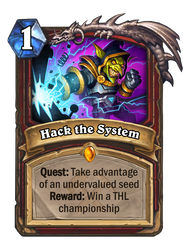
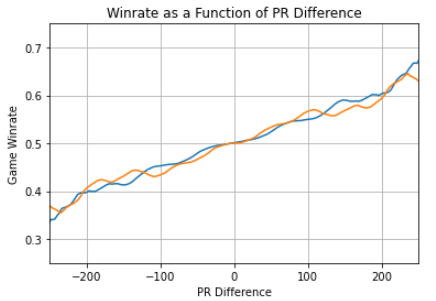
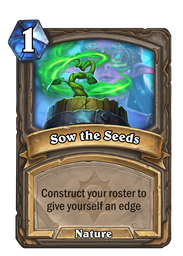

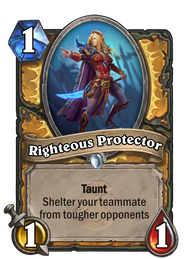
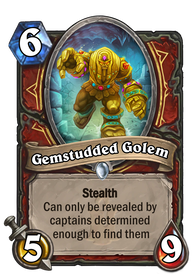
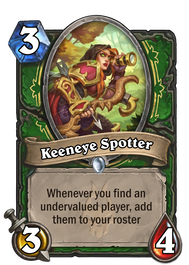
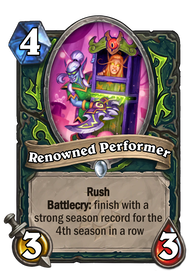
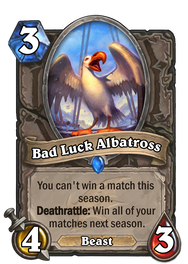
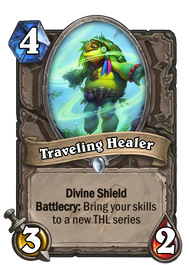
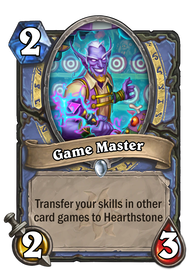
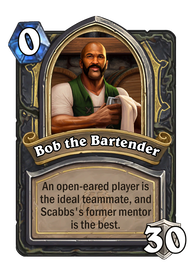
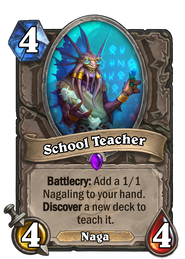
 RSS Feed
RSS Feed